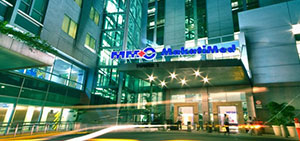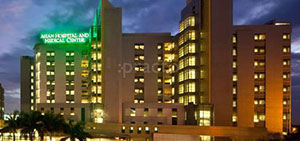Paola T. Paska
In October 2012, I underwent a total hysterectomy via robotic surgery at St. Luke’s Medical Center – Global City, just 5 weeks after being diagnosed with multiple myomas and advised that the surgery was the best course of action.
Before making my final decision, I sought opinions from 3 other doctors – not out of mistrust or lack of respect for their expertise, but simply in the hopes of avoiding surgery altogether. Their advice was sympathetic and concerned that I would be saddened about losing the ability to have children. But what really rang in my ears was the fact that I needed to have a major organ surgically removed!
Despite all of their assurances and my own research online that emphasized how common myomas are in adult women, the straightforward clinical explanations simply couldn’t soothe my anxiety. I was concerned about cost – how much would the surgery and several days of hospitalization cost? As a freelance writer, I did not have a steady salary and paid leave to help financially, so when could I return to work?
Most of all, I worried about the physical pain, especially with the possibility of traditional surgery involving a rather large midline incision, andabout recovery. I readily admit to having an extremely low tolerance for pain and I considered kicking the problem down the road. Ignore it and there’s nothing to worry about, right?
The turning point came when I read an article written by Dr. Rebecca Singson shortly after my diagnosis. In it, she clearly and simply explained the benefits of robotic-assisted surgery, including the reductions in pain, surgical risks and recovery period.
The price tag was an initial concern, which meant that my husband and I would have to dip into our savings. But it came down to a simple thought – what is the value of peace of mind? To answer this question, I considered several things:
The time value of cost. We all have busy lives – families to nurture, careers and businesses to tend, friends and activities to enjoy. To me, the prospect of returning to regular life in a matter of weeks, not months, was appealing.
The emotional value of cost. I was not the only one who had anxieties and concerns about surgery; my husband and my parents were also worried for me. The reduced risks involved in minimally invasive surgery went a long way toward soothing all of our worries.
Considering these points in combination with what I learned about robotic surgery after consulting directly with Dr. Singson, I felt more comfortable and confident about my decision to proceed with the operation.
Looking back at my experience, I cannot say enough about how happy I am with my decision! One moment, I was staring at the lights after being wheeled into the operating room and then next, I was blinking up at the OR nurse telling me that all went well. Back in my room a few hours later, I experienced some discomfort but no pain and I was walking around the hallways the following day. Less than 48 hours after surgery, I was back at home.
The only negative thing to be said about the near-total lack of pain is that it was all too easy to forget I had undergone major surgery. As such, in the ensuing days, I sometimes pushed ahead of what was physically allowed and had to dial down my activities to allow myself to heal properly. It was a reminder that the risks and side effects of major surgery are minimized, not eliminated, with robotic assistance.
I realize that not all experiences will be exactly like mine and that much is dependent on each person’s own condition and history. What we all share, however, are the same worries and fears – of pain, of risk, of negative outcomes. Often, those worries and fears of what might happen may lead us to avoid making the best decisions for our own health and well-being.
I am grateful that state-of-the-art technology and abundant information was available to help me make what was definitely the right decision for my health. I am extremely grateful that Dr. Singson and her colleagues, and institutions like St. Luke’s have made the investment in training and equipment in order to make these procedures available to patients and give us access to the resources that will help us live long, healthy and active lives.





